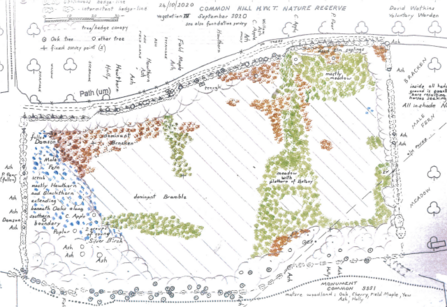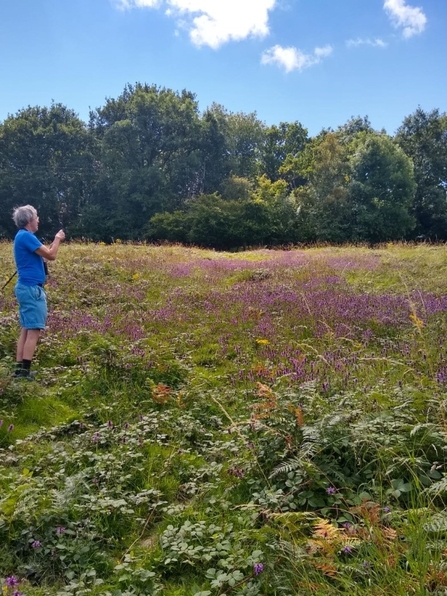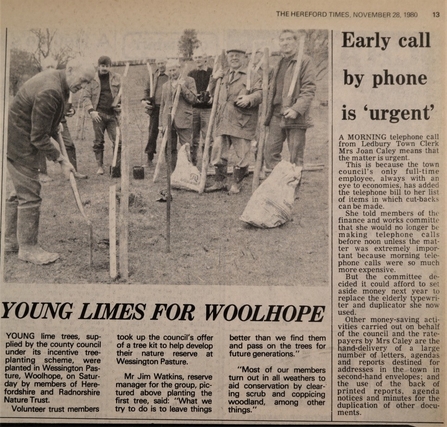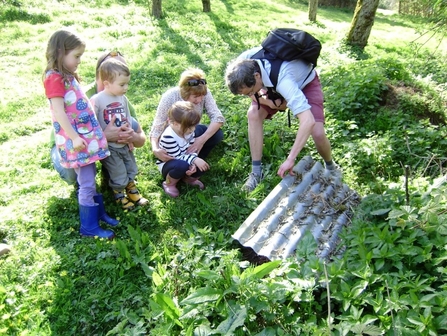2013 was a great year for me - Doug Lloyd invited me to become the voluntary warden for Common Hill Reserve!
I said “yes” with some trepidation, wondering whether I knew enough about all aspects of nature, knew enough about conservation and could do enough to be of any real help to the Trust.
Since then I have been on a continuous and enjoyable learning curve. With encouragement from Doug and others, I gradually became familiar with the annual management routine: hedging, mowing, grazing of the four main compartments of the reserve and to understand what I could do to help. I also became familiar with the various species that make this reserve a special place. I had a lot to learn especially which butterflies and flowers I should expect to see and which were unlikely.
I came to appreciate the importance of those parts of the reserve that were “organic” wildflower meadows and the reason that certain species were present, and that this in turn explained the presence of certain butterflies, especially the relatively rare Wood White.
I also came to see that these wildflower areas were becoming a rare habitat in need of conservation and likewise the two areas of old orchards.
Unexpectedly, I discovered the human history of the reserve to be an added conservation dimension having been relatively impoverished traditional smallholdings in earlier times with the remains of two cottages on the site. More ancient history is also apparent in the form of a track-way that passes through the reserve that may well be Neolithic.
And then there is the wider habitat in which the reserve is set…..
Situated as it is on the Common Hill ridge fairly centrally on the two mile stretch incorporating Nupend reserve and Lea and Paget’s reserve and bisected by the Wye Valley Way and with many neighbours interested in wildlife, the Common Hill Reserve is very much part of a “Living Landscape” as envisioned and encouraged by the Trust.
So, over the past eight years, I’ve learnt a lot and spent many happy hours getting to grips with its nature and its conservation and starting to see the dynamics of the reserve and indeed Herefordshire Wildlife Trust – nothing is entirely static. I feel privileged to be the warden of this reserve and to have the opportunity to enjoy an intimacy with all its aspects.
Awareness of this dynamic has led me to see the need for recording as much as possible about the reserve for the benefit of my successor (whenever), conservation officers, Trust members, neighbours and anyone who shows any interest in the reserve.
With the benefits of recording in mind and the amount of information acquired (not necessarily remembered!) I gradually established four ways in which I, as temporary volunteer warden, could contribute to the long term success of conservation in this locality.




